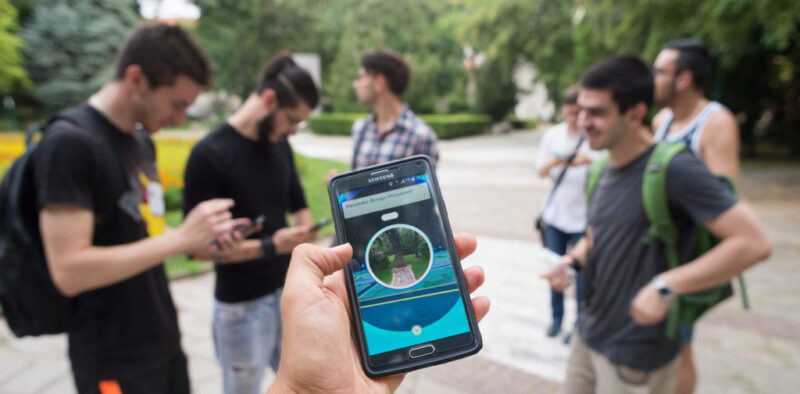A summer spent hunting through local neighbourhoods, parks and shops for virtual monsters is now just a hazy memory to most people who downloaded Pokemon Go. Four out of five users have long since given up trying to “catch ‘em all”, having stopped playing the mobile video game just two months after it peaked.
One year on from the game’s release, its developer, Niantic, is now trying to renew some users’ excitement with new features, new monsters to catch and live events to encourage more people to get out and log on. But even if this fails to significantly revive the game’s wider popularity, Pokemon Go actually retains a surprisingly large loyal fan base that could sustain the game for a long time to come.
Despite reaching US$3.3 billion in revenue in 2016, the initial hype around Pokemon Go rapidly gave way to a significant decline in mainstream popularity for several reasons. First, software issues and network availability problems deterred casual players. Getting booted out of the game, or failing to log in at all, turned it from a fun distraction to an irritating chore.
Second, as players began to catch more of the 150 original Pokemon but struggled to find the elusive final creatures, the incentive to play decreased. The routine of catching, evolving and battling the same monsters became just that, routine.
Third, the game became a race for status instead of being about exploring your neighbourhood. Many players used automated accounts to reach the highest levels of the game, making the point of putting in hours of game time to beat your friends redundant.
This last point highlights Niantic’s biggest problem in continuing to develop Pokemon Go: establishing exactly what its players ultimately hope to achieve. And critics claim Niantic has done little to develop the game in any meaningful way.
Must Read: Nobody Thought Competitive Pokemon Player Would Win A 4 vs 1, But He Did
Returning players
But the company has been able to bolster usage and entice some old players back through game updates, social media and live events. A second generation of Pokemon to catch was released in February 2017, leading to a brief spike in players and helping the game reach 750m downloads.
Fulfilling its original promise to get people exploring and mixing with others, Niantic has sponsored and organised special events that have seen thousands take to the streets to catch rare Pokemon.

Now, to celebrate the game’s first birthday, Niantic plans to enable users to catch the missing “legendary” Pokemon and introduce new ways for friends to work together in battles. The developers are clearly trying to reassert the game’s founding ideology: get out, explore and interact with people and places.
Initial reviews of the new battle system suggest changes have somewhat levelled the playing field because players receive more rewards for battling and working in teams. While gameplay has not fundamentally changed – for example, you can’t battle your friends outside of the structured gym system – the greater emphasis on teaming up to defeat opponents I think will entice returning players.
Enduring fandom
Yet perhaps more important than the new features is the surprising extent to which fans have already made the game part of their lives. A devoted community of around 65m monthly users has played Pokemon Go from the outset and eagerly anticipate the proposed updates. Initial fervour may have dissipated, yet arguably neither the cultural significance nor the core popularity (once the hype was over) of the game has waned.
Fans continue to congregate online to discuss the game on tribute sites such as The Silph Road. The online forum Reddit continues to act as a tourist guide for fans on holiday who want to catch elusive Pokemon. And loyal fans go to extreme lengths to progress in the game. One man circumnavigated the globe to catch those unavailable in his home country.
Such instances of global exploration show how the game continues to inspire fans. They constitute an international community that uses Pokemon Go as a means to interact with their environment, socialise online, and travel. Fandom is about participation, being part of something that extends beyond the individual. Pokemon Go fans represent a lively and evolving participatory culture.
With the legendary Pokemon imminent, new generations of monsters still pending and increasingly interactive elements of gameplay, Niantic is slowly turning 2016’s hype into a lasting fan experience. The game may not get the media coverage it did but that matters little to fans whose routine still includes a walk around their neighbourhood to increase their stats, talking online with others, or whose holiday destination is influenced by the whereabouts of exclusive Pokemon. Just as the Pokemon franchise has lasted for over 20 years, Pokemon Go endures as a communal and interactive platform.
Follow Us on Twitter and on Facebook.




Leave a Reply